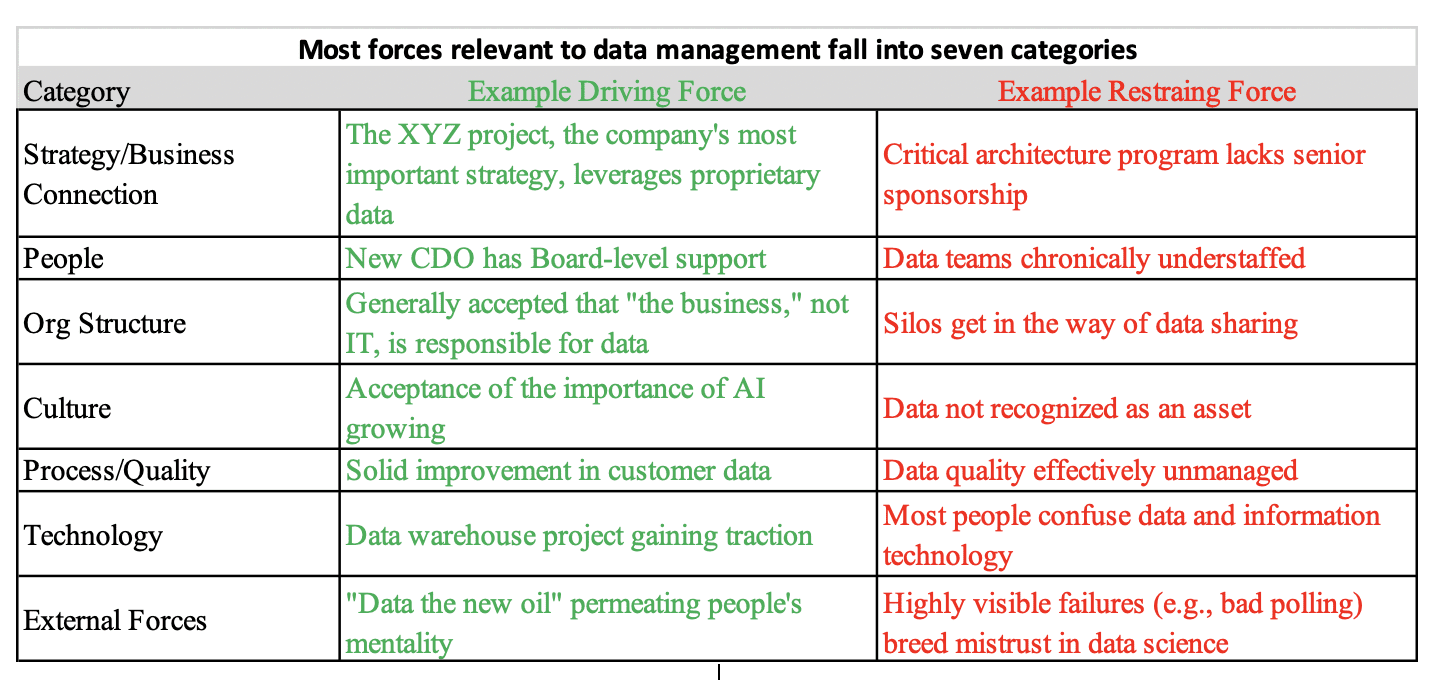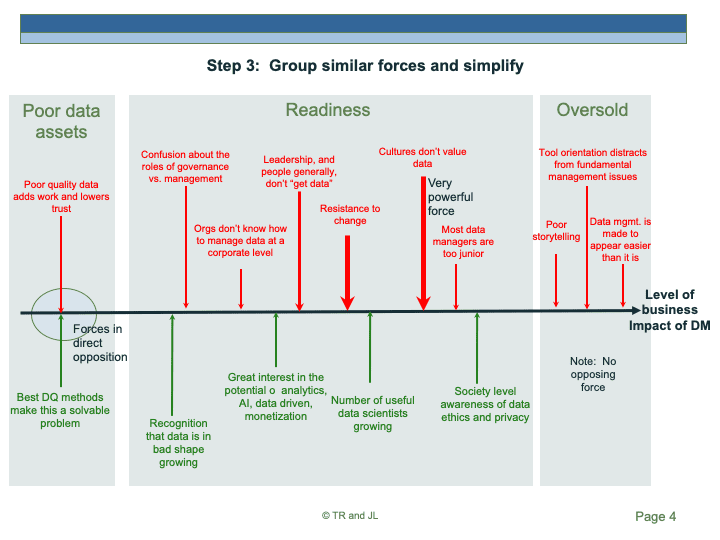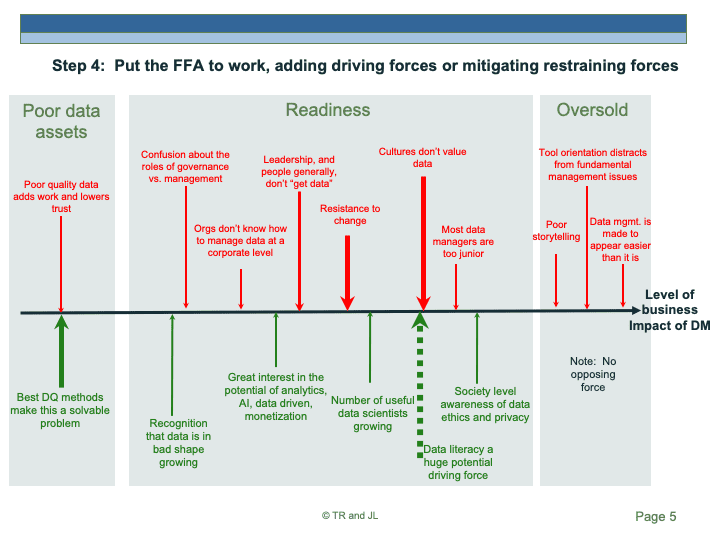
Click to learn more about co-author Thomas Redman.
Click to learn more about co-author John Ladley.
This article introduces Force-Field Analysis (FFA) [1], a tool that one of us (Tom) has used for many years to help understand and summarize the impacts of multiple factors in the data space. The goal is to equip readers with a powerful tool they may find useful as they work to advance Data Management. Along the way, we present an FFA we constructed together to help understand the factors that are driving and restraining the business value of Data Management in general. We’re using it to develop deeper insights into ways to increase business value (though most of that discussion is beyond the scope here).
The basic idea behind FFA is that a complex array of factors lead to things being the way they are. Here the subject of interest is the “business value of Data Management.” Some factors produce the desired results — these are called “driving forces.” Some, called “restraining factors,” lead to bad results. Importantly, these can reinforce one another. Or cancel each other out.
This may seem abstract, but most people appreciate the power and elegance of FFAs once they see one constructed.
Step one is to specify your topic of interest, draw a line across the center of a sheet of paper, and label the line, “Level of your ‘topic of interest.’” You’ll get this:

In step 2, you add driving and restraining forces. Driving forces are depicted in green, quite literally pushing the level of business impact of DM up. Restraining forces are depicted in red, pushing the level of business impact down. We’ve illustrated one driving and restraining force each in the graphic below and a more complete set of forces in the next graphic.

Image Source: John Ladley and Thomas Redman

Image Source: John Ladley and Thomas Redman
Driving and restraining forces can come from all quarters, and it is important to think very broadly when developing an FFA. That said, we’ve found most forces relevant to Data Management fall into discrete categories. The table below lists these categories and examples of forces that may be pertinent to your company.

Step 3 involves tidying up the graphic developed in Step 2. For example, you may wish to:
- Simplify the graphic by grouping like items together.
- Portray forces that act to cancel each other out as opposite one another.
- Use thicker lines for more powerful forces.
We’ve done all of these to arrive at our final graphic below.

Step 4 involves putting the FFA to work. In particular, if you wish to increase the business value of Data Management, you have two choices.
1. Increase the driving forces and/or
2. Mitigate the restraining forces.
In the example provided, it is to note how the FFA can tell a story. In the grouping Poor Data Assets, we see that opposing forces cancel one another out. Putting greater effort into applying best Data Quality practices could be a big winner (see the figure below).
There are both driving and restraining forces in the Readiness grouping, though there are far more restraining forces. Sorting out what to do about this is very important. One idea involves adding “Data Literacy” as a new driving force (perhaps in direct opposition to culture, as also illustrated below). Then ask, “Will it be enough to counter the restraining forces?”

Lastly, the Oversold area features no driving forces. One worries that our profession is at the mercy of deep-pocketed tools vendors exerting inordinate power. Since the focus on tools has not worked well, these efforts are holding us all back. The data industry needs something to counter the tool influences.
We urge all data managers to lead the development of an FFA in their own organizations. Doing so should not prove difficult and should yield important insights. It is a great team exercise — seek contributions from as many people as you can (including senior managers) with different perspectives. We find that many business leaders appreciate the power and simplicity of the approach. Take your time. We have passed the one presented here back and forth for several weeks as we worked to simplify the presentation. Critically, you should uncover forces that are unique to your organization — perhaps a new Chief Data Officer has management attention, or a failed data lake project has everyone up in arms. Be as specific as you can!
Get on
with it. And good luck!
References
[1] Force Field Analysis was invented by the psychologist Kurt Lewin. Do a
Google search to learn more.
